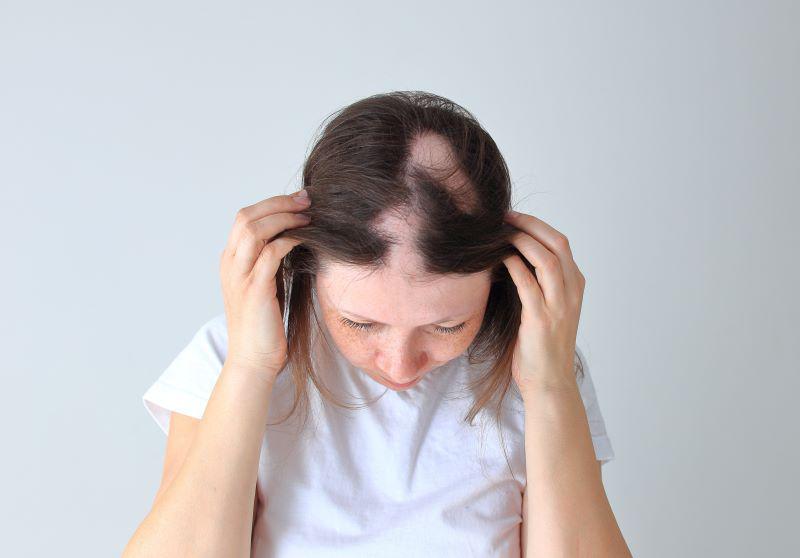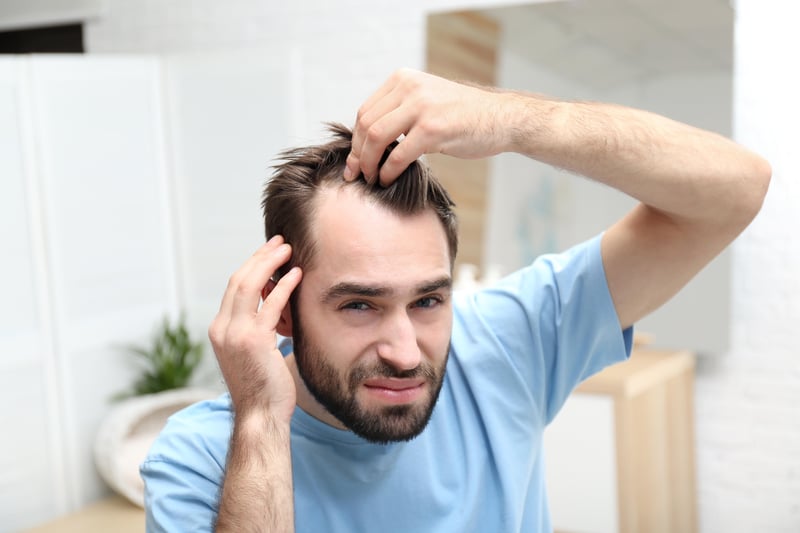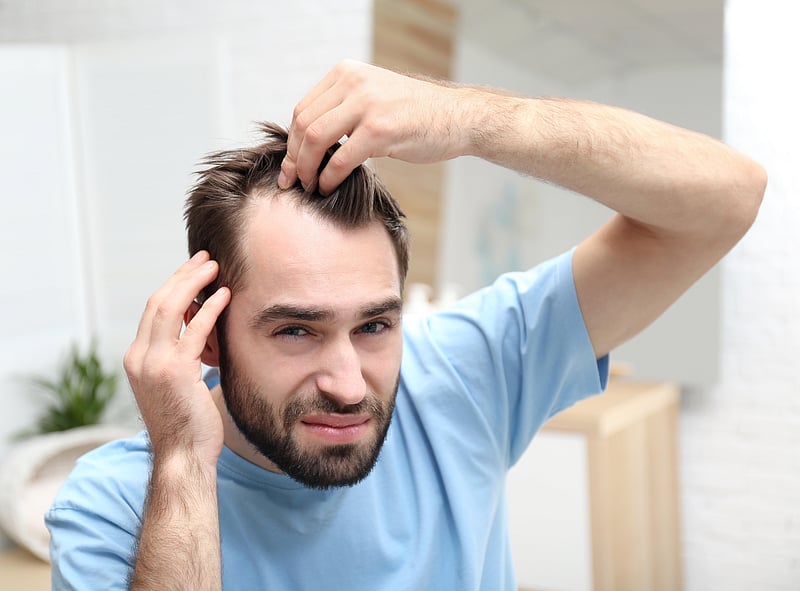Manténgase sano!
Resultados de su búsqueda "Hair Loss".
Resultados de noticias de salud - 12
Researchers have developed a novel way to promote hair growth in people who have the autoimmune disease alopecia areata.
It's a skin patch that delivers immune-system controllers through an array of tiny needles.
In alopecia, the body's own T-cells mistakenly attack hair follicles. The experimental treatment strategy uses a patch to deliver specialized cells called T-cell regulators...
- Carole Tanzer Miller HealthDay Reporter
- |
- June 10, 2024
- |
- Página completa
Early research in mice suggests a new path forward to restoring hair growth in people affected by a form of alopecia.
Alopecia areata is an autommune disorder that affects an estimated 6 million Americans and has no cure, according to researchers at the Massachusetts Institute of Technology (MIT) in Boston.
The condition causes immune system T-cells to attack hair follic...
- Ernie Mundell HealthDay Reporter
- |
- May 13, 2024
- |
- Página completa
The common hair-loss drug in Propecia and Proscar might lower men's risk of heart disease by lowering cholesterol levels, a new study suggests.
Finasteride is used to treat male pattern baldness, and it's also been shown effective in treating an enlarged prostate, researchers said in background notes.
But men who use finasteride also have substantially lower cholesterol levels, acco...
- Dennis Thompson HealthDay Reporter
- |
- February 22, 2024
- |
- Página completa
A new type of medication, JAK inhibitors, can effectively treat moderate to severe alopecia areata, a hair loss condition that has been historically hard to treat.
A study of its effectiveness, by Dr. Brett King and Dr. Brittany Craiglo...
- Cara Murez HealthDay Reporter
- |
- August 17, 2023
- |
- Página completa
Have you seen more hair in the shower or on the bathroom floor than usual?
Grab a mirror and take a look at your head. If it looks like you're "going bald,"you may have androgenic alopecia (male pattern baldness).
According to the Clevela...
- Meredith Morckel HealthDay Reporter
- |
- June 7, 2023
- |
- Página completa
Hair loss can be devastating for women, but the condition can also signal additional health problems.
An American Academy of Dermatology expert offers information about the types of hair loss seen in women with darker skin tones, common types of medical conditions associated with hair loss and treatment options.
"Research shows that women who experience hair loss can also have other...
- Cara Murez HealthDay Reporter
- |
- March 17, 2023
- |
- Página completa
In the mammalian world, there are the hairy, the less hairy and the hairless. But why that is has remained a mystery.
Until now.
In a new study that compared the DNA of 62 animals, researchers found that while humans appear to have the genes for a full coat of body hair, evolution has disabled that DNA. The same thing has happened in mammals at least nine times, including in the anc...
- Cara Murez HealthDay Reporter
- |
- January 6, 2023
- |
- Página completa
In what could be an advance against hair loss, researchers say they've successfully grown hair follicles in culture in the lab.
The Japanese research team created a system that produces fully mature hair follicles -- the tube-like structure in which the root and strand of a hair grow -- as well as hair as lon...
- Dennis Thompson HealthDay Reporter
- |
- October 21, 2022
- |
- Página completa
Sometimes just looking at a person can give clues to their likelihood of developing long COVID after a bout with the virus.
For example, obese people are five times more likely to suffer long COVID symptoms that persist at least three months after their infection clears, a major new U.S. s...
- Dennis Thompson HealthDay Reporter
- |
- July 19, 2022
- |
- Página completa
The first pill to treat adults with severe alopecia was approved by the U.S. Food and Drug Administration on Monday.
Olumiant (baricitinib) is the first FDA-approved alopecia therapy that treats the entire body rather than a specific spot, the agency said in a
Nearly all men see their hairline recede or a bald spot emerge at some point in their life. For those looking to slow the march of time, a new study helps sort out which hair-loss medications work best.
The analysis, of 23 previous studies, ranks the available hair-loss medications, from most effective to least.
Experts said the list is helpful. The medications -- dutasteride, finas...
- |
- February 10, 2022
- |
- Página completa
New research in mice may provide clues to age-related hair loss in men and women.
Scientists found that as hair stem cells in mice age, they lose the stickiness that keeps them secured inside the hair follicle. This allows the stem cells to drift away from the follicle.
"The result is fewer and fewer stem cells in the hair follicle to produce hair," said study lead author Rui Yi, a ...
- Robert Preidt
- |
- October 28, 2021
- |
- Página completa


















